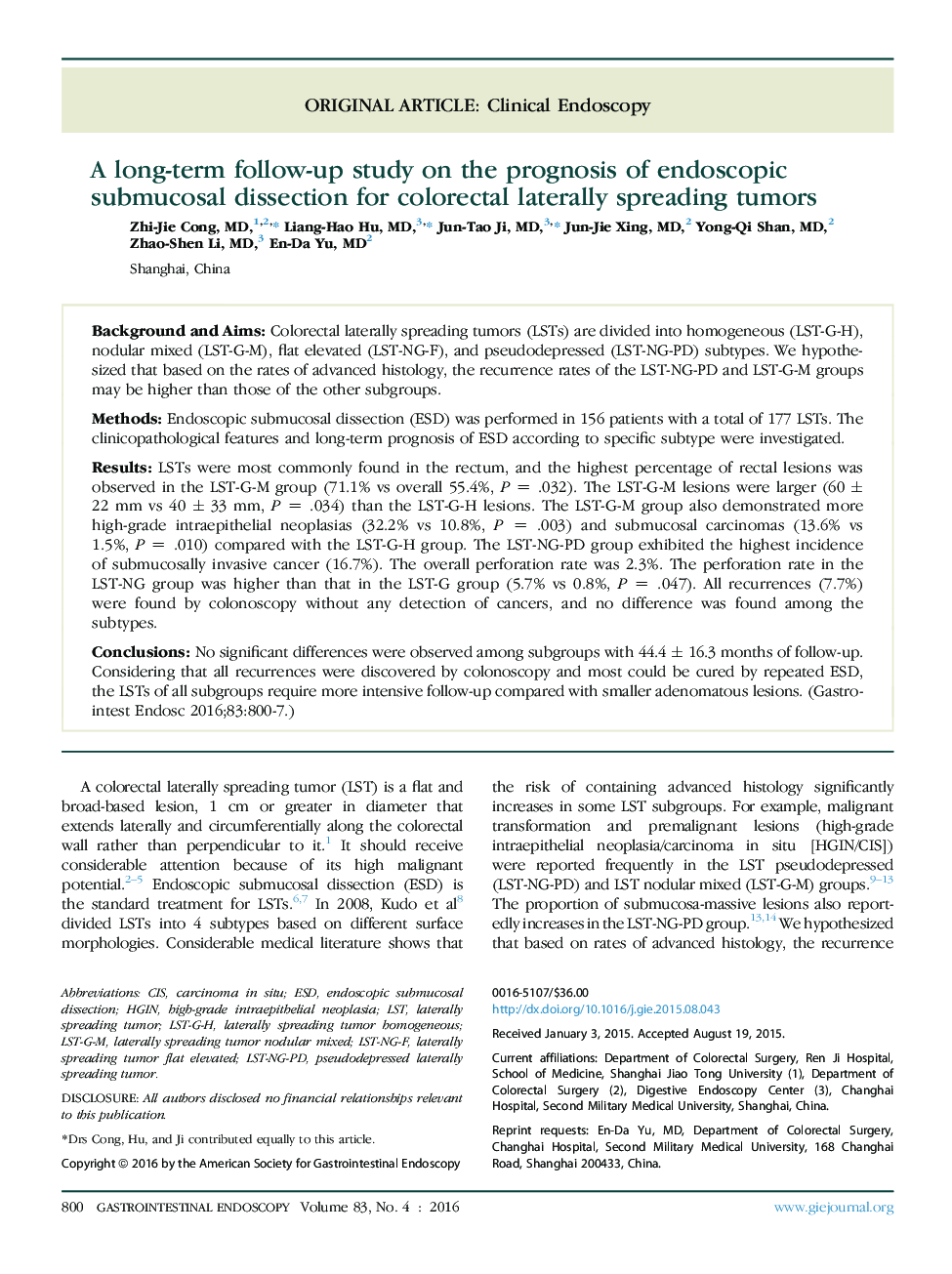| Article ID | Journal | Published Year | Pages | File Type |
|---|---|---|---|---|
| 3301724 | Gastrointestinal Endoscopy | 2016 | 8 Pages |
Background and AimsColorectal laterally spreading tumors (LSTs) are divided into homogeneous (LST-G-H), nodular mixed (LST-G-M), flat elevated (LST-NG-F), and pseudodepressed (LST-NG-PD) subtypes. We hypothesized that based on the rates of advanced histology, the recurrence rates of the LST-NG-PD and LST-G-M groups may be higher than those of the other subgroups.MethodsEndoscopic submucosal dissection (ESD) was performed in 156 patients with a total of 177 LSTs. The clinicopathological features and long-term prognosis of ESD according to specific subtype were investigated.ResultsLSTs were most commonly found in the rectum, and the highest percentage of rectal lesions was observed in the LST-G-M group (71.1% vs overall 55.4%, P = .032). The LST-G-M lesions were larger (60 ± 22 mm vs 40 ± 33 mm, P = .034) than the LST-G-H lesions. The LST-G-M group also demonstrated more high-grade intraepithelial neoplasias (32.2% vs 10.8%, P = .003) and submucosal carcinomas (13.6% vs 1.5%, P = .010) compared with the LST-G-H group. The LST-NG-PD group exhibited the highest incidence of submucosally invasive cancer (16.7%). The overall perforation rate was 2.3%. The perforation rate in the LST-NG group was higher than that in the LST-G group (5.7% vs 0.8%, P = .047). All recurrences (7.7%) were found by colonoscopy without any detection of cancers, and no difference was found among the subtypes.ConclusionsNo significant differences were observed among subgroups with 44.4 ± 16.3 months of follow-up. Considering that all recurrences were discovered by colonoscopy and most could be cured by repeated ESD, the LSTs of all subgroups require more intensive follow-up compared with smaller adenomatous lesions.
